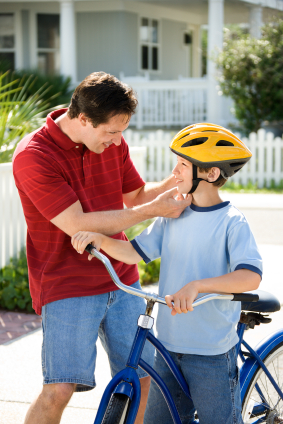 Regular physical activity in children and adolescents promotes physical and psychological health and fitness, and improves some aspects of academic performance. Compared to those who are inactive, physically active youth have higher levels of cardiorespiratory fitness and stronger muscles. They also typically have lower body fatness. Their bones are stronger, and they may have reduced symptoms of anxiety and depression.
Regular physical activity in children and adolescents promotes physical and psychological health and fitness, and improves some aspects of academic performance. Compared to those who are inactive, physically active youth have higher levels of cardiorespiratory fitness and stronger muscles. They also typically have lower body fatness. Their bones are stronger, and they may have reduced symptoms of anxiety and depression.
Youth who are regularly active also have a better chance of a healthy adulthood. Children and adolescents don't usually develop chronic diseases, such as heart disease, hypertension, type 2 diabetes, or osteoporosis. However, risk factors for these diseases can begin to develop early in life. Regular physical activity makes it less likely that these risk factors will develop and more likely that children will remain healthy as adults.
Youth can achieve substantial health benefits by doing moderate- and vigorous-intensity physical activity for periods of time that add up to 60 minutes (1 hour) or more each day. This activity should include aerobic activity as well as age-appropriate muscle- and bone-strengthening activities. Although current science is not complete, it appears that, as with adults, the total amount of physical activity is more important for achieving health benefits than is any one component (frequency, intensity, or duration) or specific mix of activities (aerobic, muscle-strengthening, bone strengthening). Even so, bone-strengthening activities remain especially important for children and young adolescents because the greatest gains in bone mass occur during the years just before and during puberty. In addition, the majority of peak bone mass is obtained by the end of adolescence.
This article provides physical activity guidance for children and adolescents aged 6 to 17, and focuses on physical activity beyond baseline activity.
Parents and other adults who work with or care for youth should be familiar with the Guidelines in this article. These adults should be aware that, as children become adolescents, they typically reduce their physical activity. Adults play an important role in providing age-appropriate opportunities for physical activity. In doing so, they help lay an important foundation for life-long, health-promoting physical activity. Adults need to encourage active play in children and encourage sustained and structured activity as children grow older.
Key Guidelines for Children and Adolescents
Children and adolescents should do 60 minutes (1 hour) or more of physical activity daily.
- Aerobic: Most of the 60 or more minutes a day should be either moderate- or vigorous-intensity aerobic physical activity, and should include vigorous-intensity physical activity at least 3 days a week.
- Muscle-strengthening: As part of their 60 or more minutes of daily physical activity, children and adolescents should include muscle-strengthening physical activity on at least 3 days of the week.
- Bone-strengthening: As part of their 60 or more minutes of daily physical activity, children and adolescents should include bone-strengthening physical activity on at least 3 days of the week.
It is important to encourage young people to participate in physical activities that are appropriate for their age, that are enjoyable, and that offer variety.
Explaining the Guidelines
Types of Activity
The Guidelines for children and adolescents focus on three types of activity: aerobic, muscle-strengthening, and bone-strengthening. Each type has important health benefits.
- Aerobic activities are those in which young people rhythmically move their large muscles. Running, hopping, skipping, jumping rope, swimming, dancing, and bicycling are all examples of aerobic activities. Aerobic activities increase cardiorespiratory fitness. Children often do activities in short bursts, which may not technically be aerobic activities. However, this document will also use the term aerobic to refer to these brief activities.
- Muscle-strengthening activities make muscles do more work than usual during activities of daily life. This is called "overload," and it strengthens the muscles. Muscle-strengthening activities can be unstructured and part of play, such as playing on playground equipment, climbing trees, and playing tug-of-war. Or these activities can be structured, such as lifting weights or working with resistance bands.
- Bone-strengthening activities produce a force on the bones that promotes bone growth and strength. This force is commonly produced by impact with the ground. Running, jumping rope, basketball, tennis, and hopscotch are all examples of bone strengthening activities. As these examples illustrate, bone-strengthening activities can also be aerobic and muscle-strengthening.








